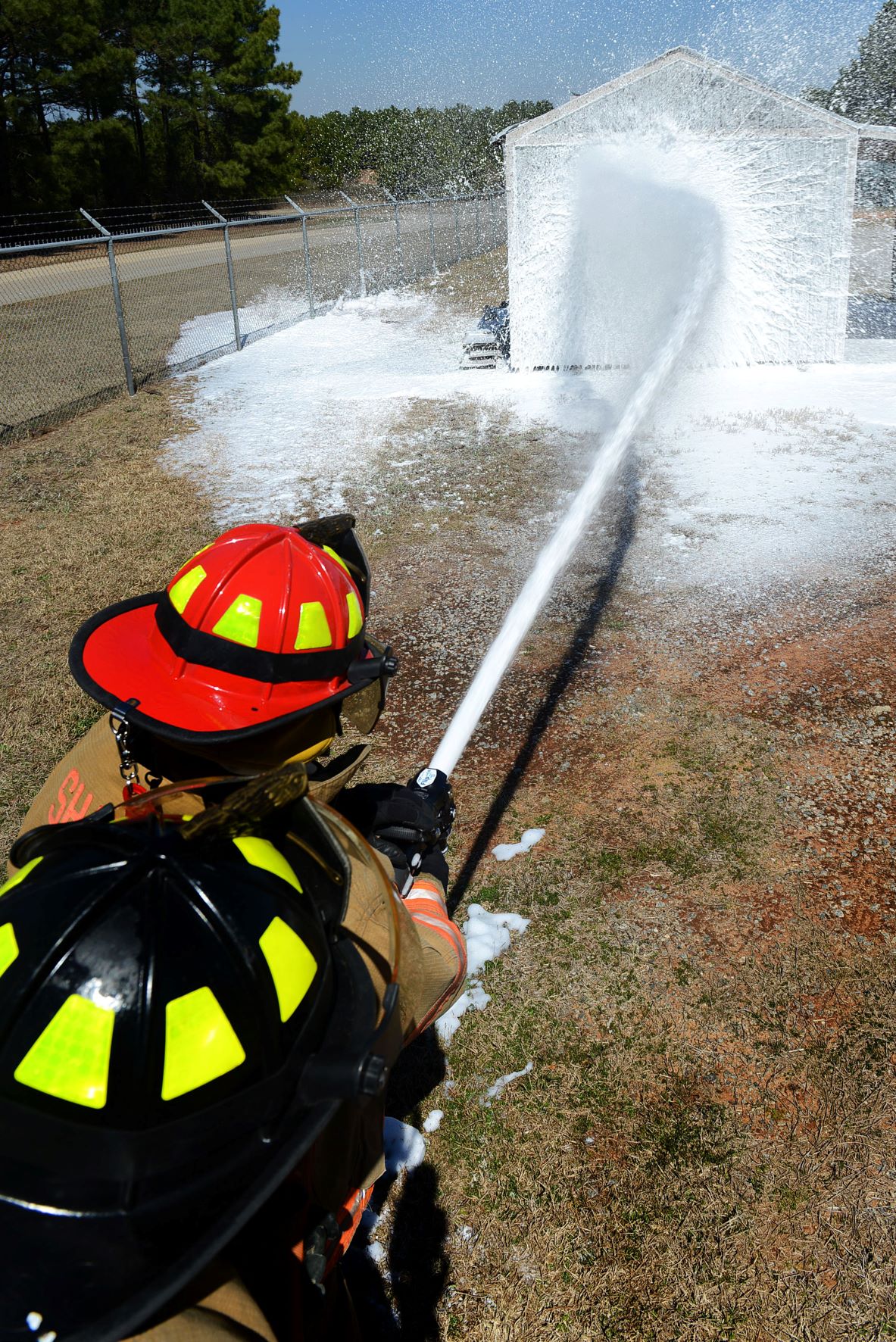To accelerate a transition to PFAS-free formulations of the firefighting foam known as AFFF (aqueous film-forming foam, or “A-triple-F”), Congress set an October 2024 deadline in the 2020 National Defense Reauthorization Act for the Department of Defense to select firefighting foam options that do not contain PFAS. That act also required a moratorium on the DOD’s incineration of old AFFF, effective last spring, due to concerns that PFAS don’t fully degrade in that process, and can contaminate air and communities near incinerator sites.

To reduce further spread of PFAS chemicals into water systems, Maine enacted a law in July 2021 mandating that AFFF be used only in emergency situations. Firefighters discharging AFFF are required to report their use to the Maine Department of Environmental Protection. The manufacture, sale and distribution of new firefighting foams with intentionally added PFAS are prohibited, except at oil terminal facilities and airports (which fall under federal firefighting regulations).
The state has no records of where AFFF stocks are, according to Joe Thomas, the state fire marshal. The governor’s PFAS task force in 2019 surveyed fire service organizations statewide to determine how much AFFF they had, but even after repeated reminders, only 60 of the 305 departments responded. Thomas said fire departments are accountable to municipalities, not the state, so actions “would have to be self-initiated at the local level.”
From responses the task force received, the Maine DEP estimates that there could be 48,000 gallons of AFFF housed in fire departments, according to a March 2022 agency report. That does not account for stockpiles still on most military bases (including Brunswick Naval Air Station, Cutler and Limestone), said Kerri Malinowski Farris, DEP’s safer chemicals program manager. More than 9,000 gallons remain at Brunswick’s former base, wrote Kristine Logan, executive director of the Midcoast Regional Redevelopment Authority, for exclusive use in the hangar fire suppression systems (which follow federal aviation guidelines set by the National Fire Protection Association).
Some military AFFF stockpiles were taken out of state from Maine’s bases, said Chris Swain, DEP’s program manager for federal facilities, but others were distributed to fire departments around the state. The Maine DEP reclaimed larger drums from the fire departments, he added, but not smaller-volume containers.
If Maine organized a takeback program now, Farris said, a likely disposal option would be through the waste corporation Clean Harbors at an estimated cost of $2.5 million (not counting the cost of replacement fluorine-free foams). Maine’s AFFF could be transported to the company’s “closed-loop landfill” in Lambton, Ontario, according to Paul Bratti, Clean Harbors’ senior vice president for project services, where landfill leachate is incinerated on site in a facility he said “meets all Canadian and provincial requirements.” Asked about PFAS testing of stack emissions, Bratti said “there’s no required air testing for PFAS at this time.”
The state has postponed organizing a takeback program until the U.S. Environmental Protection Agency provides further guidance on safe and responsible disposal options, said Faith Staples, technological hazards program manager for the Maine Emergency Management Agency. Until then, AFFF stockpiles remain in many fire departments around the state. “Everyone has something, many just 5- or 10-gallon pails,” Staples said. “It’s hard to say who has what.”
This project was produced with support from the Doris O’Donnell Innovations in Investigative Journalism Fellowship, awarded by the Center for Media Innovation at Point Park University in Pittsburgh, Pa.




